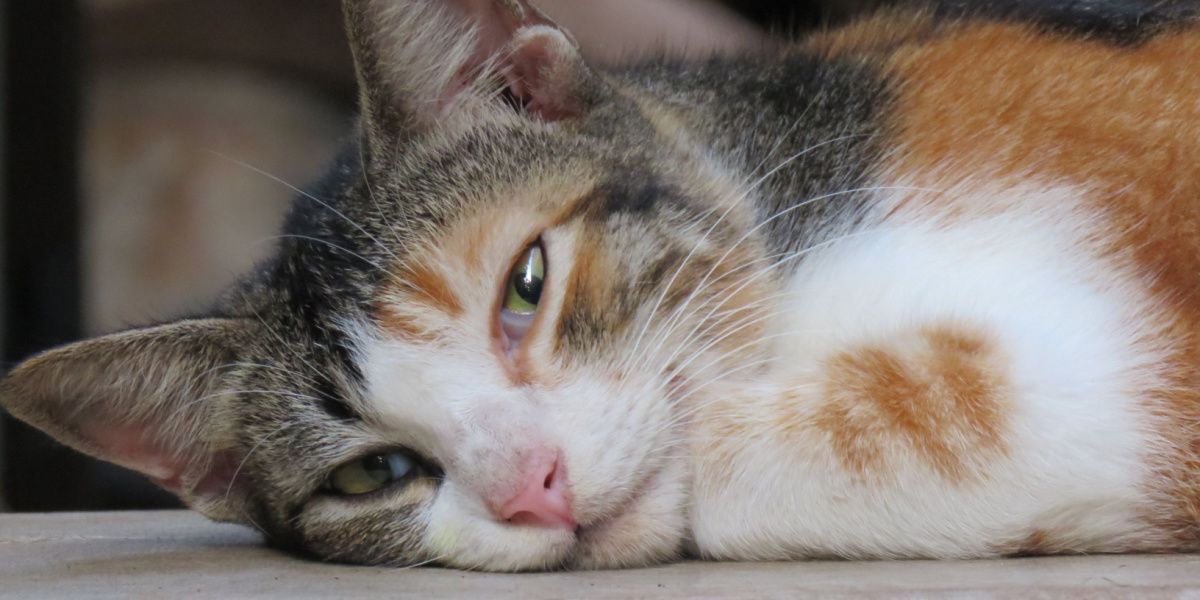
Although brain tumors in cats are uncommon, they can have significant impacts on affected cats. There are a number of different types of brain tumors that cats can develop of which is associated with unique clinical signs, treatments, and prognosis. Just like any other form of cancer, early diagnosis may lead to more treatment options and better outcomes.
Quick Overview: Brain Tumors In Cats






What Are Brain Tumors in Cats?
The phrase “brain tumor” refers to any sort of mass or abnormal cell proliferation within the brain. These tumors can be classified into two groups: primary tumors or secondary tumors. Primary brain tumors, such as gliomas, arise directly from the brain tissue or the meninges, the membranes that line the brain.
Secondary brain tumors, in contrast, originate elsewhere in the body and then spread to the brain. A tumor at a distant body site may spread to the brain via the blood or lymphatic metastasis, while a tumor originating in a nearby area (such as the nasal passages) may expand until it spreads to the brain.
Knowing whether a tumor is a primary or secondary tumor has important implications for treatment.
Causes of Brain Tumors
The cause of primary brain cancer in cats is unknown. Factors that may play a role include genetics, environmental influences, trauma, and inflammation.
Some brain tumors are associated with feline lymphoma, a disease that can affect a variety of organs within the body. Feline lymphoma is often caused by Feline Leukemia Virus (FeLV) or Feline Immunodeficiency Virus (FIV); therefore, some cases of brain tumors in cats may be caused by viral illness.
Symptoms of a Brain Tumor
Brain tumors can lead to a wide variety of clinical signs, depending on the type of tumor. The location of the lesion also plays a role in influencing clinical signs; a lesion of the forebrain will cause different signs than a lesion of the brainstem.
A growing tumor places pressure on the surrounding brain tissue, creates inflammation, cause fluid accumulation (edema), and can interfere with the flow of cerebrospinal fluid in the brain. Each of these effects can lead to unique clinical signs.
In some cats, the first signs of a brain tumor are nonspecific neurologic changes. Cats may show subtle personality changes, decreased activity level, decreased appetite, and/or weight loss. In many cases, however, the signs of a brain tumor will be more pronounced.
Depending on your cat’s tumor type and location, clinical signs may include:
- Seizures
- Staggering or stumbling when walking (ataxia)
- Trouble balancing
- Head tilt
- Blindness
- Pacing or circling
- Increased vocalization
- Increased thirst and urination
Any of these neurologic signs can be attributed to a number of different brain diseases and other medical conditions. Therefore, if you note these signs in your cat, you will need a thorough diagnostic workup to determine whether your cat’s signs are caused by a brain tumor or some other illness.
Diagnosis of a Brain Tumor in Cats

To determine if your cat has a brain tumor, your veterinarian may begin with blood tests, including a complete blood cell count (CBC) and serum biochemistry profile
If your cat begins showing neurologic signs, schedule an appointment with your veterinarian. Your veterinarian will perform a thorough physical examination, evaluating your cat’s overall health, as well as a more focused neurologic exam. A neurologic exam involves assessing your cat’s senses, reflexes, cranial nerves, and other indicators of neurologic function.
Depending on the results of your cat’s exam, further testing will be recommended. Your veterinarian may begin with blood tests, including a complete blood cell count (CBC) and serum biochemistry profile.
These blood tests help your veterinarian look for other medical conditions your cat may be dealing with, which may contribute to neurologic signs. Additionally, many of the diagnostic tests recommended for neurologic disease require anesthesia; your cat’s initial bloodwork will help detect any concurrent conditions that may pose an anesthetic risk.
Next, your veterinarian will likely recommend some sort of imaging. Radiographs (x-rays) can be beneficial when looking for certain types of brain tumors, but most cats will need to be referred to the neurology department of specialty hospital for advanced imaging, such as computed tomography (CT scan) or magnetic resonance imaging (MRI). These tests, which are performed under anesthesia, allow the detection of small brain tumors that could not be seen on radiographs.
While your cat is anesthetized for imaging, a veterinary neurologist may also perform a cerebrospinal fluid (CSF) tap. In this test, a small amount of the fluid that bathes your cat’s brain and spinal cord is removed using a long needle.
By examining the chemical characteristics of your cat’s CSF and examining the fluid under a microscope, a veterinary neurologist may be able to get a better idea of what specific disease is causing any abnormalities detected on imaging.
Definitive diagnosis of a brain tumor requires a biopsy. A veterinarian must remove a piece of the brain tumor for examination under a microscope. This is often performed in conjunction with surgical excision, if surgery is attempted. In some cases, treatment decisions are made without a biopsy, based on the cancer that is assumed to be most likely, given imaging findings and CSF analysis.
Brain Tumor in Cats Treatment
Brain tumors are typically treated using any of three approaches: surgery, radiotherapy, or chemotherapy. An oncologist will talk to you about which treatment options are best for your cat’s condition. Survival times for brain cancer vary, depending on the type of tumor and the particular oncology treatment that is utilized.
Surgical removal is the best option for several different types of brain tumors. If your cat’s imaging studies suggest that the tumor may be a meningioma (a benign tumor of the brain’s external lining), your veterinarian may recommend surgical removal, because this treatment is often curative. Other tumors, however, may be less amenable to surgical removal.
Radiation therapy is often used for tumors that cannot be treated surgically. Radiation therapy uses targeted radiation to kill off cancer cells, shrinking or eliminating the tumor. Although the prognosis with radiation therapy varies, depending on the type of tumor, many cats will show an improvement in clinical signs and may go onto live for years after radiation therapy.
Chemotherapy may be used in addition to surgery or radiation, or it may be used as a stand-alone treatment. Lymphoma, in particular, is often treated with chemotherapy. Chemotherapy treatment in cats typically involves a combination of oral and injectable medications. Cats typically experience fewer side effects from chemotherapy than humans, making this a valid treatment option for many cats.
If treatment is not an option, due to the cat’s disease or owner limitations, palliative care may be attempted. Corticosteroids, such as prednisone, can help decrease swelling and inflammation associated with a brain tumor and lead to a short-term improvement in the cat’s quality of life. Phenobarbital and other medications may be used to control seizures. These treatments will not cure the brain cancer, but can help keep a cat comfortable for a longer period of time.
Conclusion

Those big cheeks that contribute to a male cat’s big head are a kind of armor to help protect him during fights.
Receiving a diagnosis of suspected brain cancer can be overwhelming for any cat owner. While a brain tumor is certainly a serious concern, there are differences between brain tumors. Some brain tumors have a relatively good prognosis, with aggressive treatment.
Talk to your veterinarian and oncologist to determine the best treatment options for your cat and what outcomes you can expect from treatment.
Frequently Asked Questions
What are the symptoms of a brain tumor in cats?
The symptoms of a brain tumor in cats can vary, depending on the tumor type and location. Common signs include personality changes, decreased appetite, weight loss, seizures, circling, pacing, loss of coordination, trouble balancing, head tilt, blindness, and other behavioral changes.
How common are brain tumors in cats?
Brain tumors are relatively uncommon in cats, but they can and do occur. Early diagnosis and treatment can help improve the outcome of a feline brain tumor.
How much does cat brain surgery cost?
The cost of brain surgery in cats can vary, depending on your cat’s overall condition, the extent of the tumor that needs to be removed, and the overall cost of living in your area. In general, you should expect to spend approximately $5,000 - $6,000 for brain surgery on a cat.







